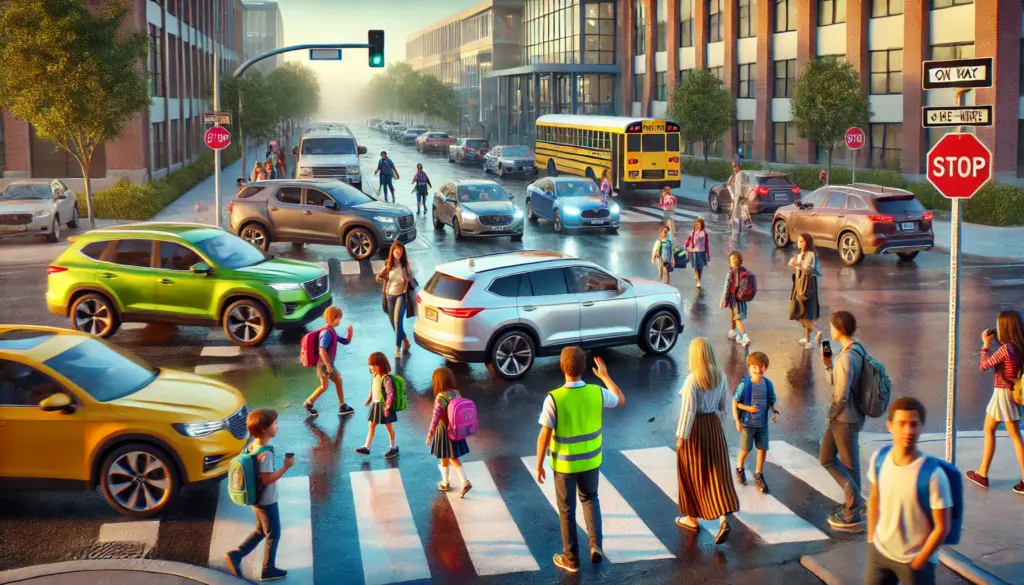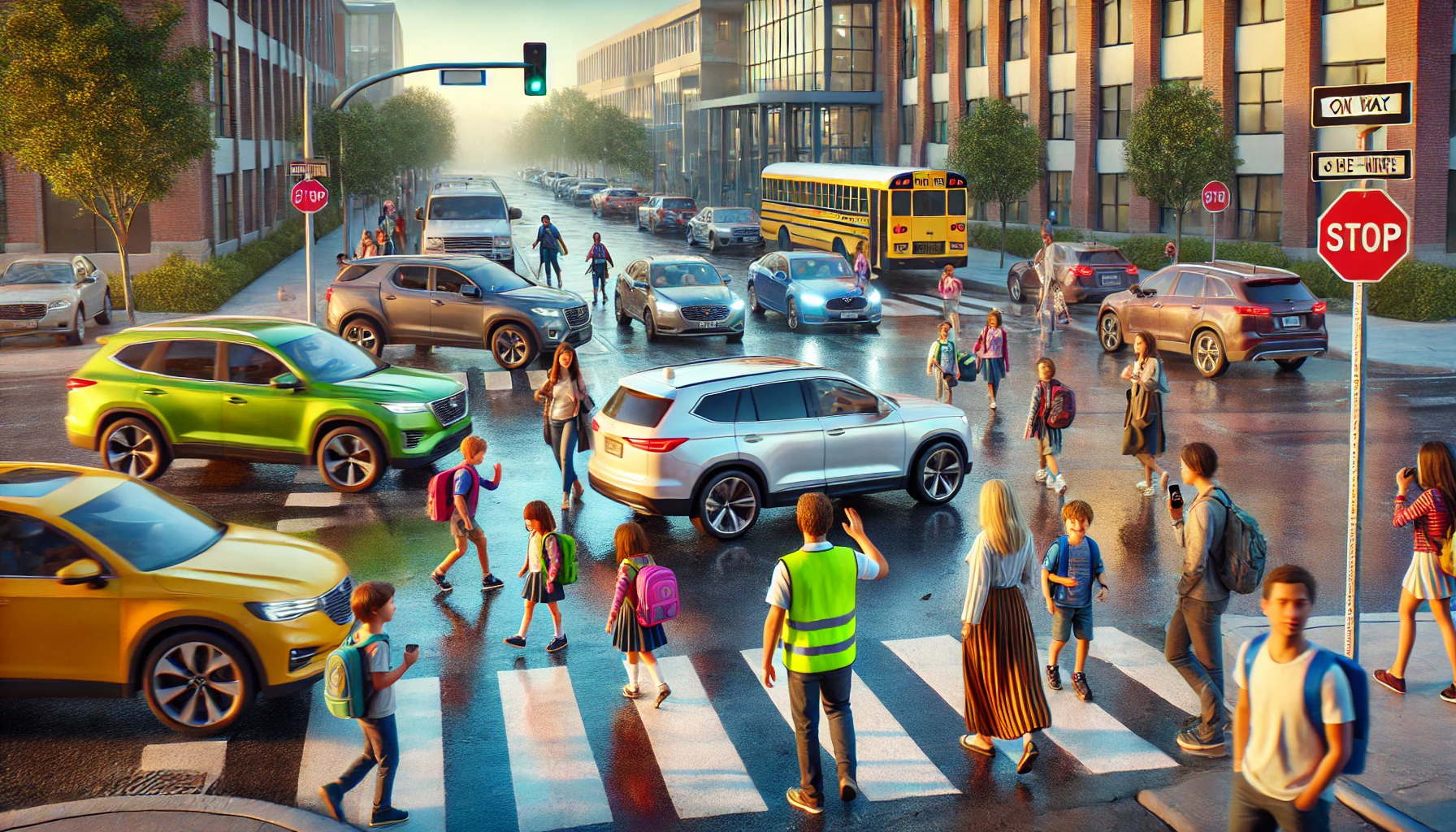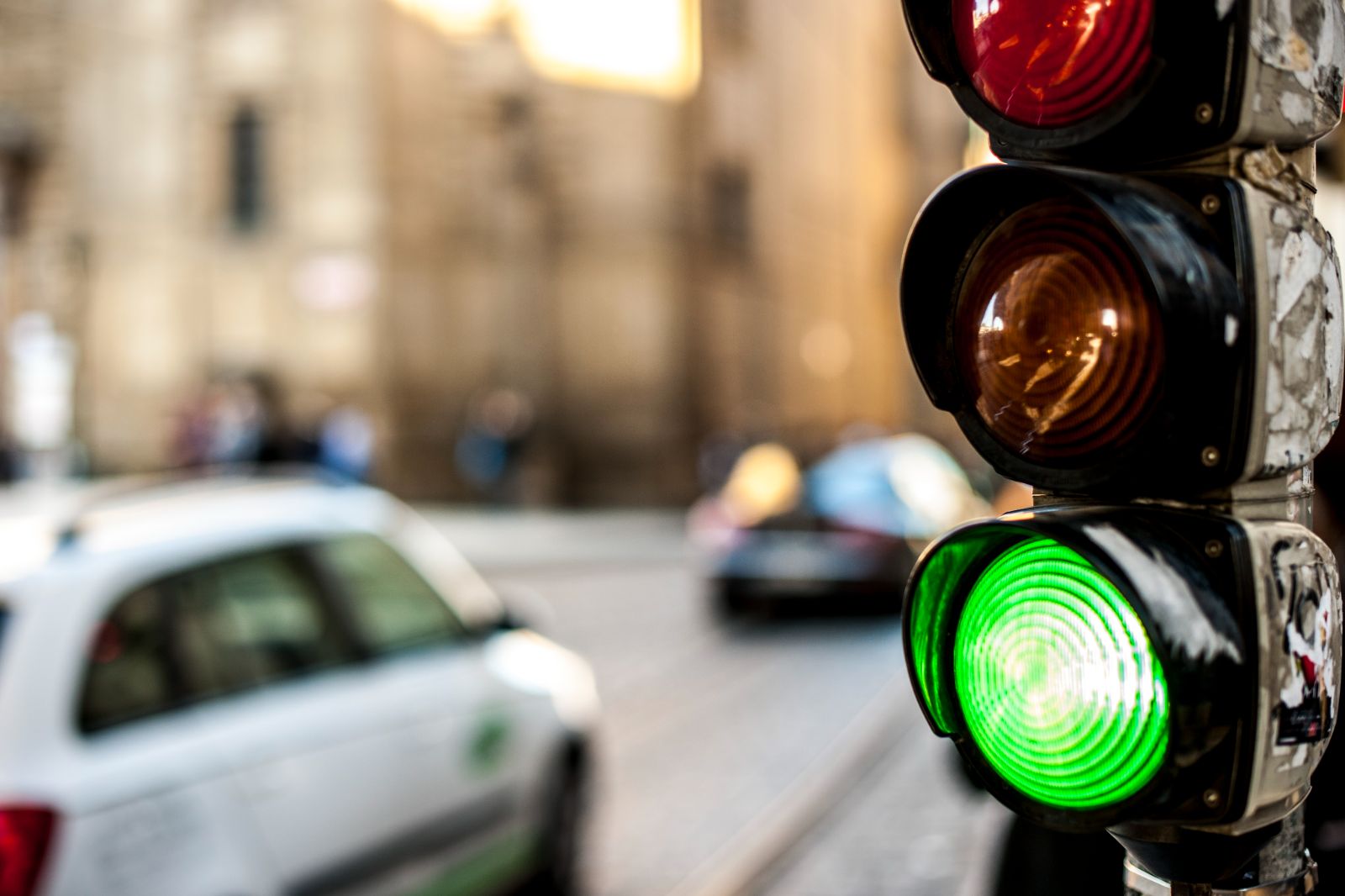
If you’re a parent who has children who attend school, then you’re likely already aware of the chaos that is created by pickup and drop-off. Picture this: a street completely overrun by cars, children, and pedestrians—all trying to occupy the same space. It’s not just parents rushing to drop off their kids. There are people trying to get to work, dog walkers navigating the madness, and cyclists weaving through the mess. It’s utter chaos.
You’d think it’s Black Friday at a Walmart in the middle of the city, where everything is free—because everyone wants to be where everyone else is, all at once. But unlike Black Friday deals, there’s nothing to gain here, only risks. These overrun environments, where everyone’s in a rush, are accidents waiting to happen. And the scariest part is that these tragedies are entirely avoidable.
The Problem
Let’s cut through the excuses. School drop-off zones are a circus of entitlement and impatience. Parents block lanes, stop in crosswalks, double-park, and some even leave their cars idling in the middle of the road. Oh, and let’s not forget the distracted drivers texting or holding speakerphone calls like it’s a free pass. These behaviors aren’t just inconsiderate—they’re flat-out dangerous.
And it’s not just parents. There’s a ripple effect: residents stuck in traffic trying to get to work, delivery drivers squeezing through tight spaces, and pedestrians dodging jaywalking kids. The result? A chaotic, dangerous environment that increases the risk of collision and injury for everyone involved.
I’ve heard from concerned citizens who push for automated enforcement measures like speed cameras only to end up being the ones caught speeding. Hypocrisy much? School zone safety starts with owning up to your actions.
The Hard Truth
Here’s the reality: there’s no “undo” button in life. Every decision you make behind the wheel has consequences. Distracted driving or rushing through a school zone isn’t just a minor mistake—it can destroy lives.
It happened in Toronto… a child struck and killed right in front of their school. Parents left shattered, first responders carrying that grief, and a driver who will live with that guilt forever. Moments like this don’t just hurt families—they haunt communities.
Let me be blunt: this isn’t theoretical. This happens, and it’s preventable.
The Solution
Here’s how we fix it:
1. Plan Ahead
Stop hitting snooze. Set your alarm earlier. Prep the night before. It’s simple math: an extra five or ten minutes can mean the difference between chaos and calm. As we say in the Shapiro household, “Early is on time, on time is late, and late is unacceptable”—a lesson I first learned at the Toronto Police College as a new recruit.
2. Be Considerate
School zones aren’t your driveway or personal parking lot. Think beyond your own kid and realize that your decisions affect everyone around you. Blocking a lane or crosswalk puts other kids—and your own—in danger.
3. Foster Independence
Ask yourself: does my kid really need to be dropped off at the front door? Encourage them to walk part of the way. Not only does it cut down on congestion, but it also teaches responsibility and gives them a chance to get some exercise. If you don’t feel comfortable with a drop-and-roll, park outside the chaos zone and walk your kids to school from there. You’ll avoid adding to the insanity—and you’ll both get some steps in to start the day.
4. Cut the Excuses
Too tired? Don’t want to wake your kids early? That’s on you. Organize your life to remove the roadblocks to being on time. Your kid’s safety—and everyone else’s—is worth it.
5. Support Automated Enforcement
Let’s be real: speed cameras and other measures save lives. But if you’re the one speeding and racking up tickets, don’t blame the camera. Fix your behavior.
Teaching by Example
Your kids are watching everything. I know mine are—down to the GPS display. They’ll call me out if I’m 1 or 2 km/h over the speed limit. If we break the rules, we’re teaching them it’s okay to do the same. Be the example you want them to follow.
And it’s not just about your own kids. We’re shaping an entire community. Every small decision contributes to a safer environment—or a more dangerous one. It’s that simple.
A Call to Action
Parents, teachers, law enforcement, and communities—this isn’t just one person’s problem. It’s all of ours. We need to work together:
• Schools: Communicate clear drop-off procedures and enforce them.
• Parents: Stop cutting corners, both literally and figuratively. Show up early, park legally, and walk your kids if needed.
• Law Enforcement: Advocate for stricter school zone monitoring and education campaigns.
• Community: Support initiatives like safety patrols and speed cameras.
The Bigger Picture
This isn’t just about one morning or one drop-off. It’s about creating a culture of safety and mindfulness. When we make better choices, we protect not just our own families, but everyone in the community.
We’ve all seen what happens when people treat rules as optional. It’s time to do better. Let’s make school zones safe for every child—because no morning rush is worth a life.



